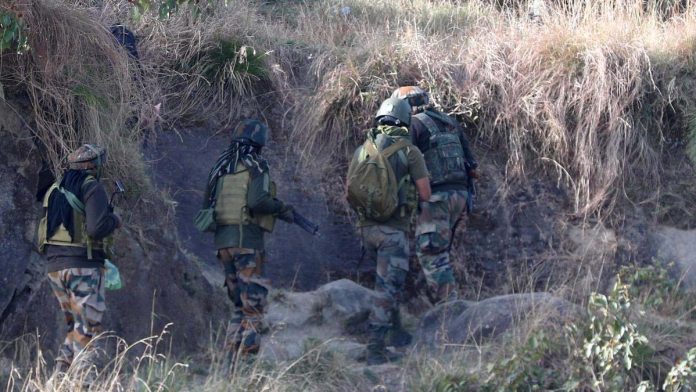The gun battle in the Ghati Heights of Kathua district, which claimed the lives of four JKP personnel and left several others wounded, including a DySP, is yet another reminder of the relentless security challenges facing Jammu and Kashmir. The firefight saw the killing of three heavily armed Pakistani terrorists and injured seven others in a dangerous and challenging terrain. The terrorists were identified as members of the Pakistan-based JeM group, a terrorist organisation with a long history of violence in the region. The battle, involving sophisticated weapons and tactical expertise, underscores the seriousness and intensity of the threat posed by cross-border terrorism, especially as Pakistani terror groups like JeM continue to target security forces and civilians.
The gun battle erupted after local civilians observed unusual movements of terrorists in the village of Safiyan in the Ghati Heights. The swift response by local police and SOG teams marked the beginning of the intense search operation that quickly escalated into a violent confrontation. Despite the difficulties posed by the dense foliage and difficult terrain, the security forces managed to neutralise three terrorists, though not without paying a heavy price. The loss of 4 JKP personnel is an irreparable loss to their families, their colleagues, and the nation. The tragic deaths of these policemen remind us that the fight against terrorism is not one fought solely in the form of gunfire and explosions but also in terms of the sacrifices of brave men and women who risk everything to ensure the safety and security of the people. The police not only engaged in combat but also worked in tandem with the army, paramilitary forces, and other agencies, showing the kind of coordination necessary for such high-stakes operations. However, the battle does not end here.
The fact that the terrorists were equipped with M4 carbines, grenades, and other sophisticated weapons further highlights the seriousness of the threat posed by these groups. The use of rocket launchers by the army and the discovery of explosive materials only confirm the well-planned nature of these attacks. The terrorists seem to have come prepared, and this adds to the growing concern about the increasing sophistication of terror outfits operating in the region. With the help of drones and other surveillance equipment, the security forces are expected to continue operations in the coming days to neutralise any remaining threats. What is particularly troubling is the potential link between this encounter and the earlier one on Sunday in the Hiranagar sector. The possibility that the same group of terrorists could have moved from one location to another raises questions about the effectiveness of the security cordon and the infiltration routes used by these terror groups. It is believed that the terrorists infiltrated through a ravine or a newly constructed tunnel from across the border. This highlights the vulnerability of the border areas and the urgent need for better border management and surveillance, especially given the technological advancements in terror operations.
The people of J&K have long suffered from the scourge of cross-border terrorism. They have witnessed decades of violence, fear, and loss. The courage of the security forces in standing up against this threat is unwavering. However, the support of the local population is critical in identifying and eliminating terror elements. The community’s role in providing timely information to the authorities ultimately weakens the terror network’s operations and helps pave the way for lasting peace in the region.
While the immediate priority remains to ensure that all terrorists are neutralised and security restored, there are long-term lessons to be learnt from these encounters. The continuous infiltration of terrorists from Pakistan underscores the need for robust countermeasures, including enhanced border security and intelligence-sharing between agencies. Additionally, efforts to disrupt the financial and logistical networks supporting these terror groups must be ramped up. The focus must be on both tactical and strategic approaches to combat the deep-rooted terror infrastructure across the border.
Trending Now
E-Paper


